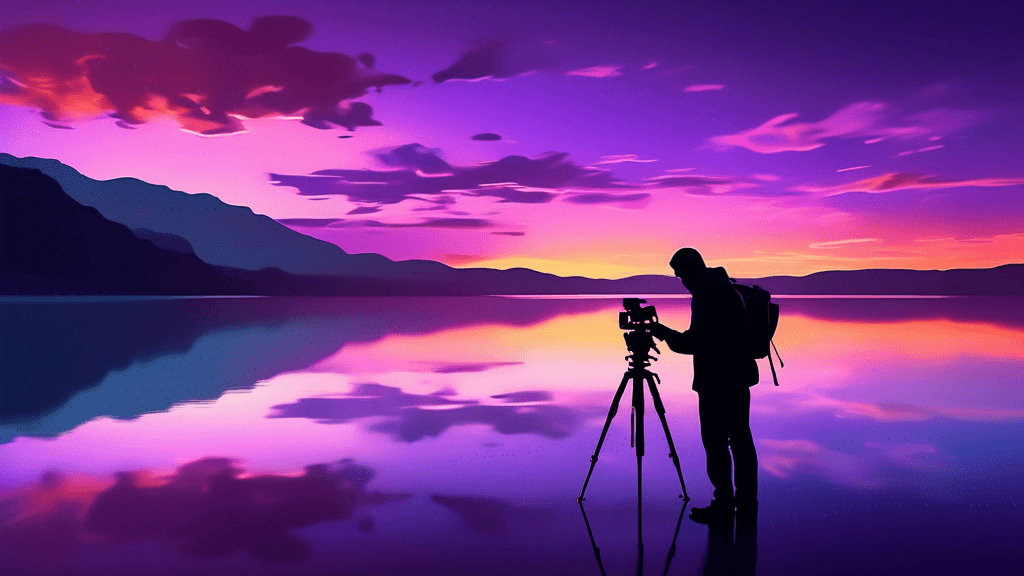
Mastering the Art of Twilight Photography
Share
Understanding Twilight Photography
Twilight photography is a compelling niche within the broader realm of landscape and cityscape photography. It captures scenes during the twilight phases of dawn and dusk, imbuing them with enigmatic light and distinct color hues that are not present during the full light of day. But what exactly makes twilight photography so unique, and why do photographers go to great lengths to capture these moments?
The Magic of Twilight: More Than Just Light
Twilight, often referred to as the blue hour, encompasses the time before sunrise and after sunset. The sun is below the horizon, illuminating the sky with a soft, diffuse light. This unique lighting condition presents a plethora of opportunities for photographers. But what makes it so special?
- Soft Diffused Light: Absence of the harsh sun rays results in a smoother, more evenly distributed light that enhances color saturation and reduces contrasts.
- Rich Colors: The ‘golden hour’ is succeeded by a profound blue shade pervading the sky, often accompanied by vibrant oranges, pinks, and purples at the horizon.
- City Lights: In urban settings, the artificial lights of buildings, street lamps, and cars begin to glow under the twilight sky, adding a new layer to the visual composition.
Techniques for Mastering Twilight Photography
Engaging successfully with twilight photography involves understanding and mastering specific techniques and settings that cater to low-light conditions.
Planning Your Shoot
Success in twilight photography begins long before you click the shutter. Planning is essential.
- Scout Locations: Knowing exactly where and what you want to photograph is crucial. Look for locations with interesting silhouettes, water bodies for reflections, or cityscapes that balance natural and artificial light.
- Timing is Everything: The perfect twilight light can last for a mere 20-30 minutes. Apps and tools like The Photographer’s Ephemeris can help in predicting the exact times of sunrise and sunset at specific locations.
Camera Settings and Gear
Optimal camera settings and gear are paramount to capturing the fleeting twilight moments.
- Tripod: A sturdy tripod is indispensable for stability during long exposures needed in low-light conditions.
- Use a Low ISO: To ensure minimal noise, use the lowest ISO setting possible. It will require longer exposures but yields cleaner images.
- Aperture Priority Mode: This gives you control over the depth of field while the camera adjusts the shutter speed automatically for optimal exposure.
- Manual Focus: Auto-focus can be unreliable in low-light. Switch to manual focus to guarantee your subject is sharp.
Composition Secrets
Composition in twilight photography can dramatically affect the mood and impact of your image.
Include elements such as silhouetted shapes to create drama. Leading lines, such as roads or shorelines, can guide the eye and add depth to your compositions. Reflections can also play a significant role, turning a simple composition into a mesmerizing scene.
Incorporating Environmental Elements
Twilight photographers have a unique responsibility to capture the natural world responsibly and ethically. As an environmental steward, remember to:
- Respect wildlife and natural habitats by keeping a safe distance and not disturbing the natural state of the location.
- Follow Leave No Trace principles, ensuring that you leave the area as you found it, or even cleaner.
- Promote environmental awareness through your images, encouraging others to appreciate and conserve our beautiful planet.
Concluding Thoughts
Mastering the art of twilight photography is a journey of continual learning and experimenting. The unique challenges of low-light conditions can transform into your greatest assets with patience, practice, and passion. As you pursue this captivating form of photography, consider what new perspectives and stories you can bring to light during these magical hours.
Take Action
Why not plan your next twilight shoot this week? Gather your gear, scout a location, and lose yourself in the magic of twilight. Capture not just images, but stories of the silent world between day and night. Share your captures and insights with a burgeoning community of twilight photographers online, inspiring others with your beautiful and ethereal perspectives.





